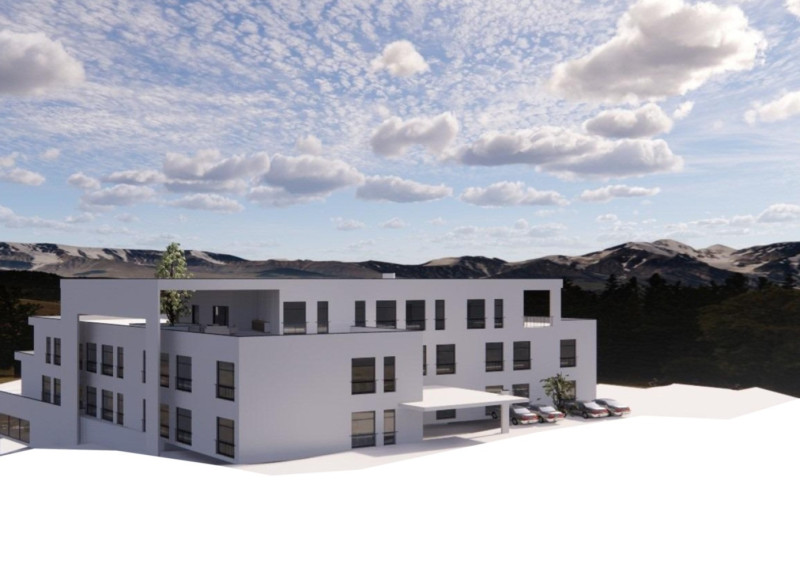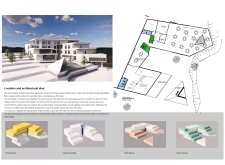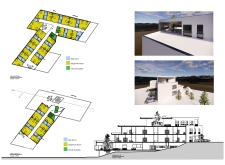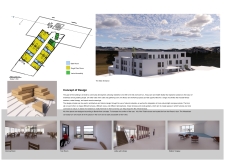5 key facts about this project
### Overview
Located in a picturesque valley, the senior residence integrates living, leisure, and care within its interconnected volumes. The design seeks to create a supportive environment that encourages community while meeting the specific needs of elderly residents. The orientation of the building takes advantage of scenic views, allowing natural light to penetrate the interior through large panoramic windows. The welcoming foyer serves as a transitional space that connects the exterior and interior, enhancing the overall experience for both residents and visitors.
### Spatial Strategy
The residence is organized into three primary volumes: the main building, which houses living areas and communal facilities, and two annexes that flank the main structure, forming a central courtyard that serves as a shared gathering space. This layout balances private and public areas, with the upper floors dedicated to living quarters while the ground floor accommodates accessible communal facilities. Private rooms are designed for comfort, with options for single and twin configurations, allowing for companionship. Common areas such as the dining room, library, and workshop spaces are strategically placed to promote social interaction and engagement among residents.
### Materiality and Design Features
The selected materials prioritize durability and create a warm, inviting atmosphere. Concrete is utilized for structural integrity, while large glass windows facilitate natural lighting and visual connections to the landscape. Wood features in communal spaces to enhance acoustics and warmth, while metal components provide a modern aesthetic. The design emphasizes barrier-free accessibility, supporting ease of movement for residents with mobility challenges. Notable features include varying roof terraces that encourage gardening and outdoor activity, as well as abundant natural light to enhance residents' well-being. This careful consideration of materiality and design facilitates a sense of belonging and connection to the surrounding environment.





















































